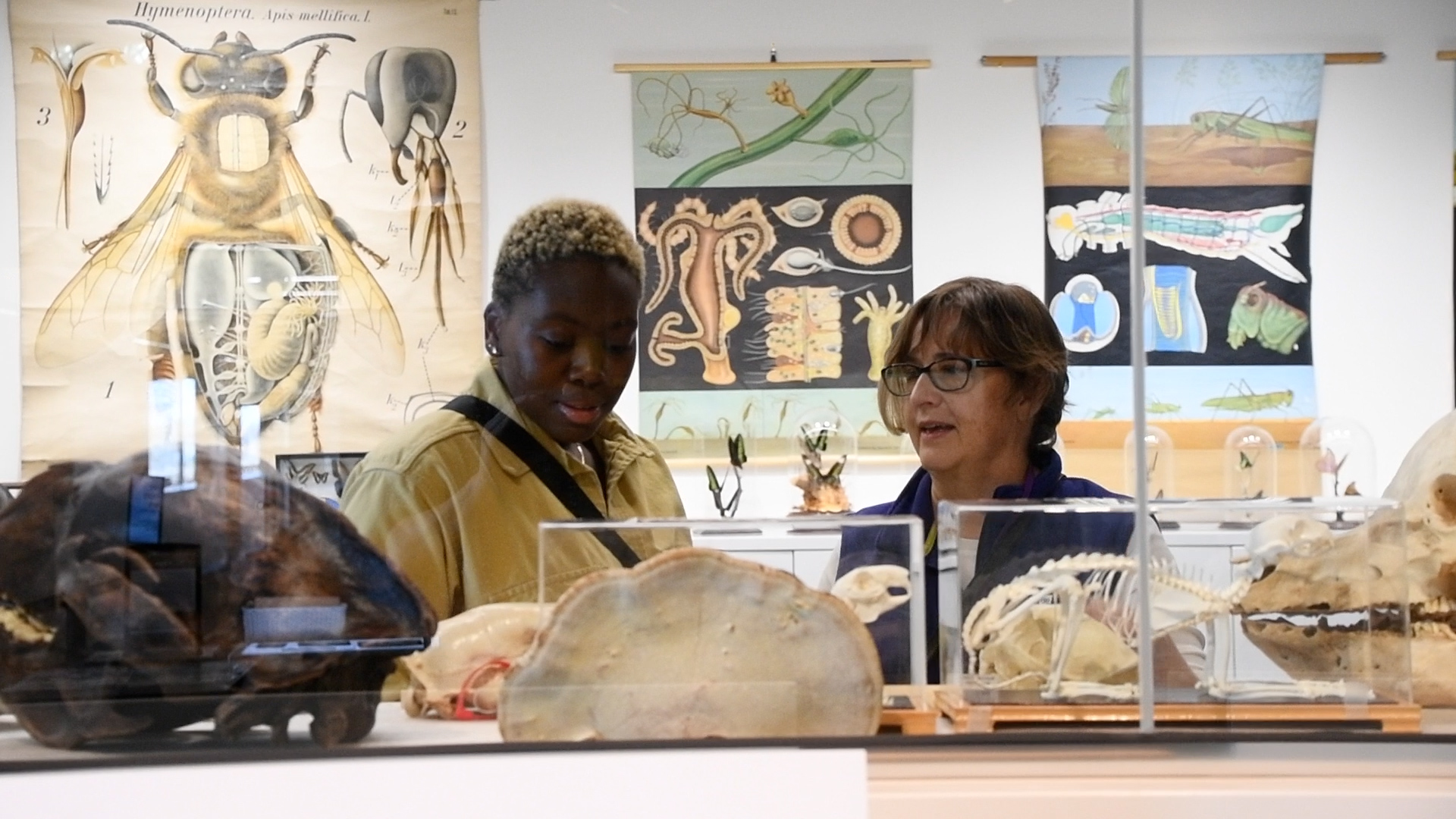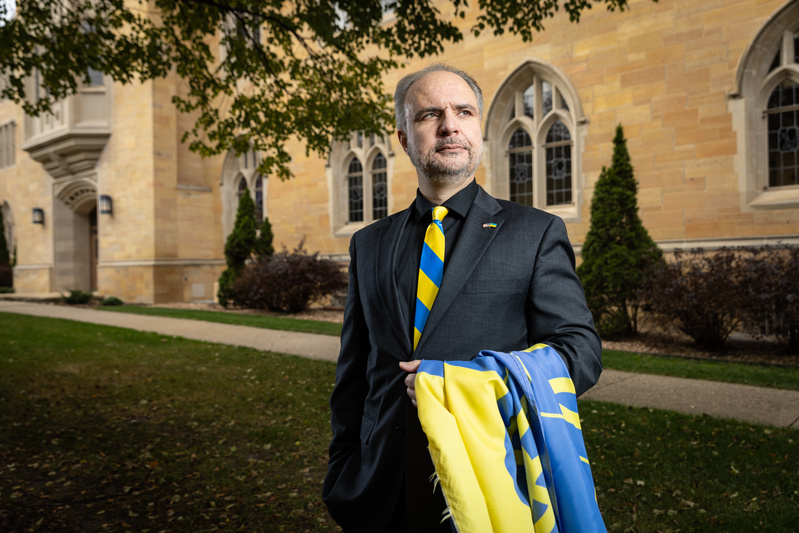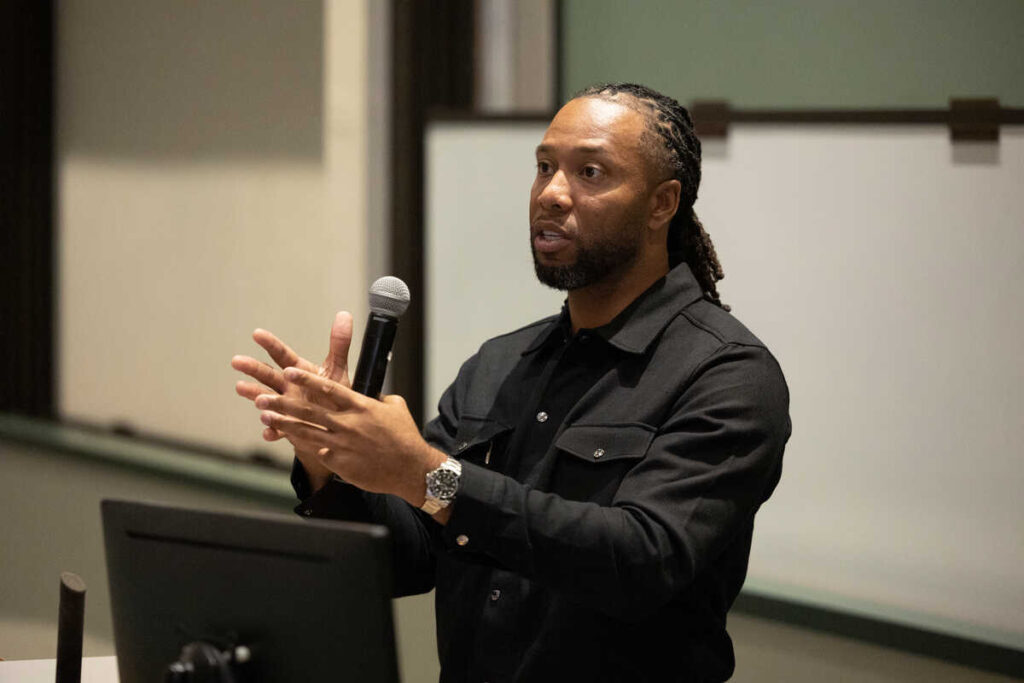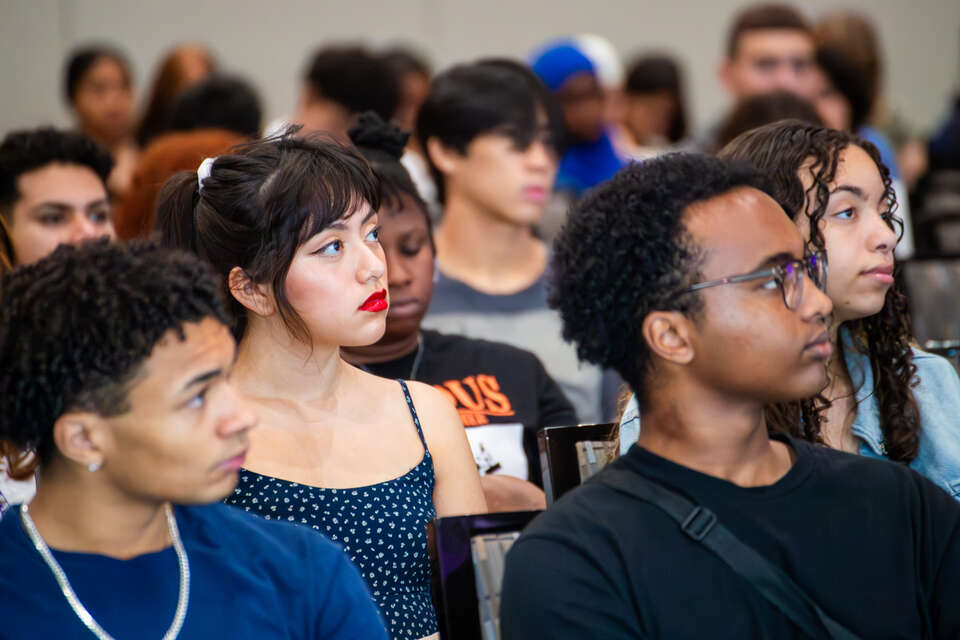You could almost see the light bulbs flashing. The day’s task for scholars at the brand-new Dougherty Family College STEM Club was to create an LED light, completely from scratch.
That meant picking out their own blinking bulbs, prepping battery packs and melting metal joints together with a soldering iron at a temperature of more than 600 degrees Fahrenheit.
After plenty of smoky anticipation and a few faulty starts, dozens of LED light bulbs started to blink and color the room. But for these scholars, the bigger bulb that lit up might have been within their own minds.
“Engineering is just a complex puzzle. It’s all about piecing things together, using math and science,” STEM Club member and first-year scholar Jerry Salguero Flores said. “I’ve always been fascinated by that puzzle and the desire to fix something.”
Encouraging that fascination with STEM is a top priority at Dougherty Family College as leaders work with community partners to address a critical need: increasing the number of underrepresented students who pursue STEM careers.
According to a STEM jobs report from the Pew Research Center, Black and Hispanic workers remain underrepresented in STEM fields compared with their share of all workers and they are less likely to earn degrees in STEM fields compared to other degrees.
Thanks to a generous grant from the 3M Foundation and the Heim family, the STEM Preparation Program that rolled out at DFC in 2022 aims to better serve scholars from undervalued communities with interests in science, technology, engineering and mathematics.
Nurturing STEM interests through exploration
The new STEM Club is where scholar Salguero Flores is now nurturing his interest in civil engineering. Fellow club members are considering majors such as medical biology, data science and cyber security.
“This club has created a united community,” Salguero Flores said. “You have people who have the same fascinations, but also different types of creativity, different types of aspirations. But they all come together in this club to create relationships and bond around science.”
Club members explore a variety of STEM topics, and potential careers, through hands-on activities. They’ve taken blood samples, created electric circuits and staged a mock epidemic of communicable diseases. Field trips have taken scholars to Twin Cities soil labs and science museums.
“At a base level, we want to get students interested. Because a lot of students go into college and don’t think a STEM program could be for them,” Program Director and Math Specialist Heather Isernhagen said. “A lot of students say, ‘Oh, I’m bad at math.’ But it turns out they’re actually pretty good at it.”
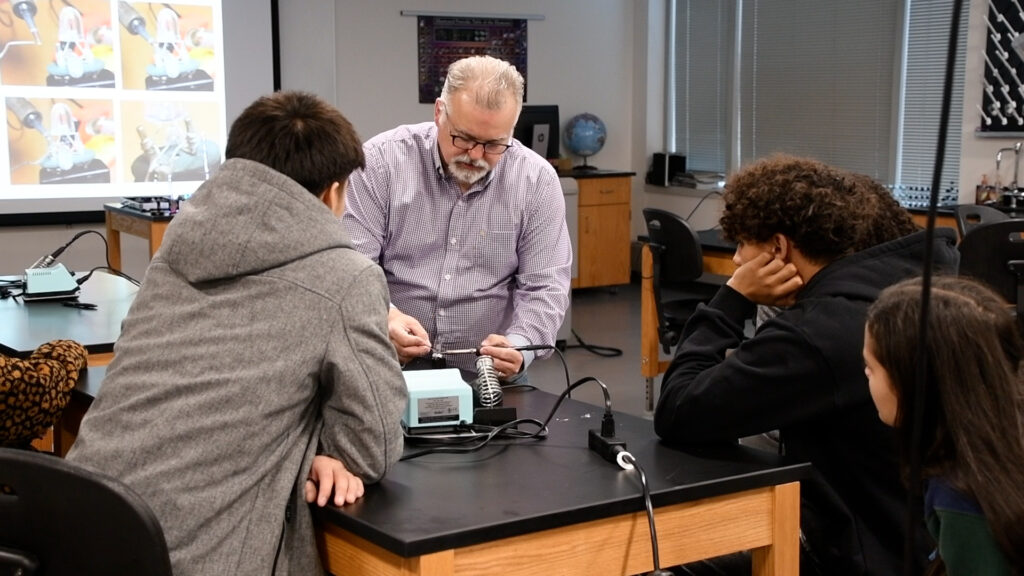
After getting scholars hooked on STEM, or at least open to the possibilities, the STEM Preparation Program is also deploying more practical tools to widen and expand pathways. Scholars receive additional support to complete advanced math courses critical for most STEM majors, like calculus. And this summer, scholars will partner with STEM-oriented faculty members on paid research projects.
In the end, it’s all about creating as smooth of a transition as possible for scholars to pursue STEM majors once they graduate with their associate degree from DFC.
“We want them to leave here with a bit of the STEM curriculum under their belts so that they’re feeling confident in the future,” Isernhagen said. “We also want them to have the tools, to truly be able to hit the ground running with their science content.”
A program built with community partners
Creating the STEM Preparation Program has taken time. Also critical: community support.
In addressing scholars’ needs, DFC faculty and administrators knew they couldn’t go at it alone. And so, like they have since the very inception of the college itself, community partners were brought in as discussions around a potential STEM program began.
Jacqueline Berry, 3Mgives manager of education initiatives, was quickly on board. Berry helped secure a generous 3M Foundation grant for the program, believing in its potential to change lives and grow a more diverse generation of leaders to enter STEM fields.
“We need students from all backgrounds participating in the development of solutions to solve the world’s most challenging problems,” Berry said. “To achieve that, everyone must have an opportunity to pursue a STEM career if that’s what they decide to do.”
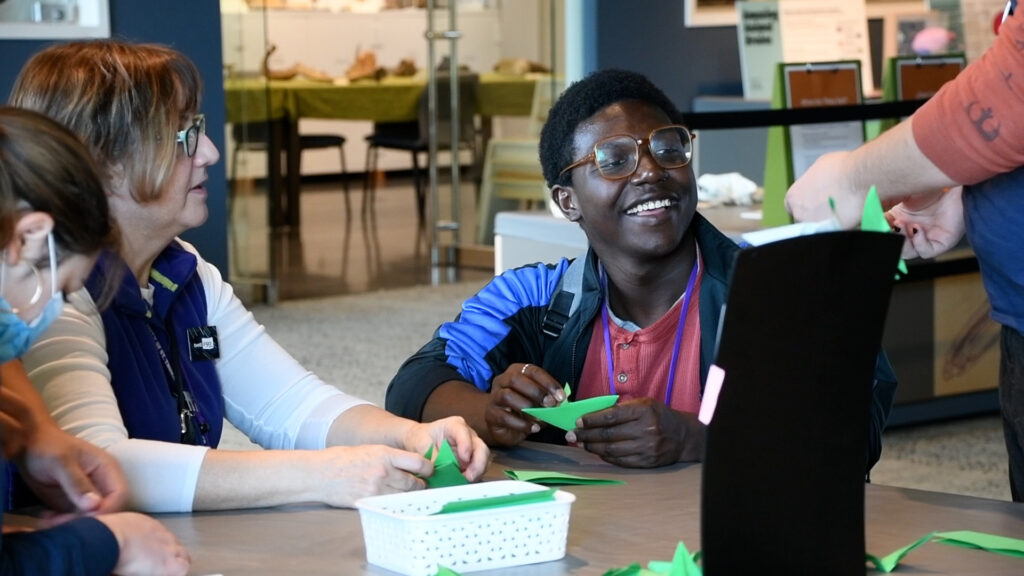
The need for STEM graduates remains high across multiple industries, but scholars from undervalued communities don’t often see themselves in STEM careers. For example, Black workers comprise 9% of the STEM workforce, smaller than their share of all employed U.S. adults (11%), according to the Pew study. They comprise just 5% of those in engineering and architecture and 6% each in life and physical science jobs.
3M is on a mission to change that and create smoother, more welcoming pathways.
“No. 1, we want students to see that these careers are in fact attainable,” Berry said. “If students can see it, they can do it as well.”
Establishing a new sense of what’s possible
Geology faculty Michele Stillinger faces cultural disparities head on with scholars. Whether in geology class or STEM Club, Stillinger challenges her students to reevaluate the career choices they’ve been so far led to explore.
"I ask them to think about the messages they learned as a child, to question what kind of career they really can go in to,” Stillinger said. “I try to open them up to all these different options, because maybe the message was never received when they were younger, whether that was because of cultural stereotypes or other barriers in high school.”
Eliminating those obstacles, whether real or perceived, takes time. And that’s what the STEM Preparation Program is at its heart. It is quality time spent with scholars, giving them the foundation to believe in themselves.
"They have something to contribute, and their voices need to be heard,” Stillinger said. “If we can build their confidence, then they're going to have a much better chance at succeeding moving forward.”
Moving forward with community and confidence
As the program continues to grow, STEM faculty are planning additional math support and a service-learning project. But many of the existing elements are already proving a hit with scholars.
Salma Thompson has been a regular at STEM Club for months now, and credits Stillinger for opening her mind to a possible career in water conservation.
“I find comfort in definitive answers and data and facts,” Thompson said. "But I’m kind of all over the place when it comes to picking something to study. STEM Club has given me a lot of ways to explore that.”
And even if she doesn’t choose a career in science, she believes it's been time well spent.
“It really feels like a community here,” Thompson said. “I feel really lucky to be a part of it.”
